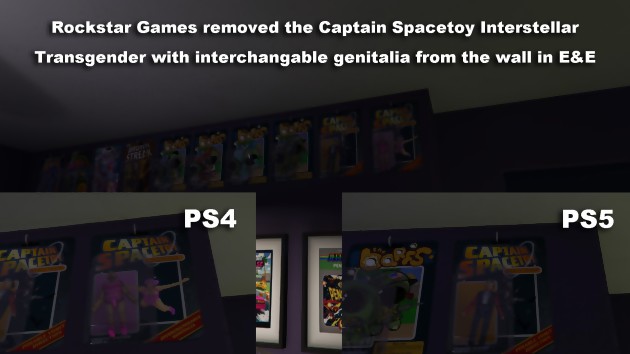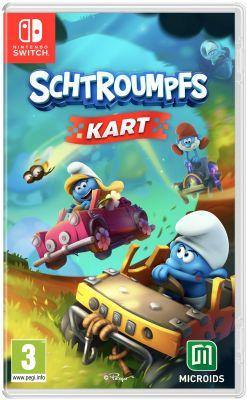 We are obviously in 50 BC, and the small village of Asterix and Obelix is not the only one to fight against the Roman invader. In Hibernia, which will later be called Ireland, it is the tribal chief Irishcoffix who is a great resistance fighter despite the absence of a magic potion on his land. His thing is a lucky ram with golden horns. But now the Roman general Roulètrus kidnaps the poor animal, thus plunging Irishcoffix into depression. The daughter of the latter then decides to seek help on the other side of the Channel, and to bring Asterix and Obelix back to the Emerald Isle, so that the two Gauls begin their famous distribution of slaps. Simple and effective, without being particularly transcendent, this scenario is well worth that of certain recent albums. One of the main qualities of the game is also to fully respect the universe created by Uderzo and Goscinny. Clean and readable, the 3D graphics are just right cartoon, while the two Gallic heroes, constantly followed by the discreet but very present Dogmatix, remain perfectly recognizable from above. From Obelix's spinning arm to the Roman soldier thrown into the air while his sandals remain on the ground, the animations echo those made famous by cartoons and comics. The voices, English and French, are perfectly consistent with the different known versions and never offend the ears. Finally, the narration multiplies puns and modern references, as comics have been able to do so well for decades. Special mention to the chef Otofocus who has a "goal" and likes to "tune up", as well as to the singer Radiogagax, whose head and lines of lyrics are respectively inspired by Freddie Mercury and the songs of Queen.
We are obviously in 50 BC, and the small village of Asterix and Obelix is not the only one to fight against the Roman invader. In Hibernia, which will later be called Ireland, it is the tribal chief Irishcoffix who is a great resistance fighter despite the absence of a magic potion on his land. His thing is a lucky ram with golden horns. But now the Roman general Roulètrus kidnaps the poor animal, thus plunging Irishcoffix into depression. The daughter of the latter then decides to seek help on the other side of the Channel, and to bring Asterix and Obelix back to the Emerald Isle, so that the two Gauls begin their famous distribution of slaps. Simple and effective, without being particularly transcendent, this scenario is well worth that of certain recent albums. One of the main qualities of the game is also to fully respect the universe created by Uderzo and Goscinny. Clean and readable, the 3D graphics are just right cartoon, while the two Gallic heroes, constantly followed by the discreet but very present Dogmatix, remain perfectly recognizable from above. From Obelix's spinning arm to the Roman soldier thrown into the air while his sandals remain on the ground, the animations echo those made famous by cartoons and comics. The voices, English and French, are perfectly consistent with the different known versions and never offend the ears. Finally, the narration multiplies puns and modern references, as comics have been able to do so well for decades. Special mention to the chef Otofocus who has a "goal" and likes to "tune up", as well as to the singer Radiogagax, whose head and lines of lyrics are respectively inspired by Freddie Mercury and the songs of Queen.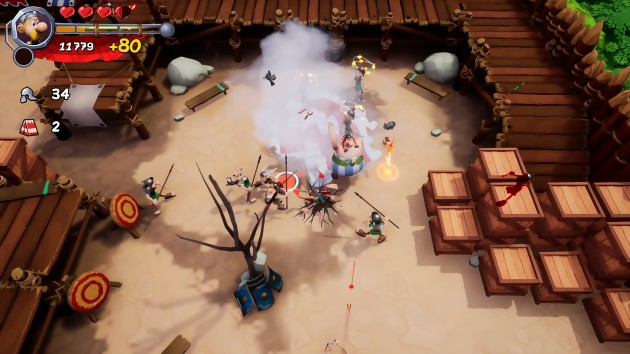
BUFF THEM ALL!
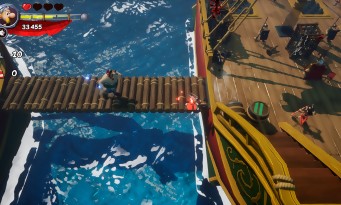 Naturally, the gameplay gives pride of place to fights. But if it is still possible to hit the Romans with your bare hands, this time it is strongly advised to grab one of the many objects available to us in the scenery in order to strengthen the power of our attacks. Not stingy with official or makeshift weapons, the game thus allows us to strike with sticks, boards, stools, benches, spears, hammers, shovels, shields, fish, Romans previously stunned, or menhirs. This last possibility, however, remains reserved for Obelix, who is the only one who can handle the heaviest objects. The presence of the "just a little wrapped up" Gaul is also necessary to operate certain pressure plates, while his frail companion is the only one who can hold onto certain fragile platforms. The two heroes therefore play a little differently, which is obviously welcome. Besides, if they both have a rush movement, Asterix uses it to dodge the Romans while Obelix uses it to jostle them. This dash can be short or long, just as the attacks can be light or heavy. The combat system is also enriched with an ultimate attack with different levels of power, and whose notched gauge fills over the blows distributed. The bulk of the enemy troops are made up of rank and file soldiers, units equipped with powerful weapons, Romans protected by shields requiring a hammer to be dislodged, centurions boosting other fighters, and… that's about it . This is one of the problems of the game, which shows a certain repetitiveness. There are also a few missed opportunities on this subject, like this crossing of the English Channel simply summarized in cinematics, and which could have given rise to a playable encounter with the famous pirates of the comic strip. This shortcoming is all the more astonishing as fights on boats (moored, of course) are present at some point.
Naturally, the gameplay gives pride of place to fights. But if it is still possible to hit the Romans with your bare hands, this time it is strongly advised to grab one of the many objects available to us in the scenery in order to strengthen the power of our attacks. Not stingy with official or makeshift weapons, the game thus allows us to strike with sticks, boards, stools, benches, spears, hammers, shovels, shields, fish, Romans previously stunned, or menhirs. This last possibility, however, remains reserved for Obelix, who is the only one who can handle the heaviest objects. The presence of the "just a little wrapped up" Gaul is also necessary to operate certain pressure plates, while his frail companion is the only one who can hold onto certain fragile platforms. The two heroes therefore play a little differently, which is obviously welcome. Besides, if they both have a rush movement, Asterix uses it to dodge the Romans while Obelix uses it to jostle them. This dash can be short or long, just as the attacks can be light or heavy. The combat system is also enriched with an ultimate attack with different levels of power, and whose notched gauge fills over the blows distributed. The bulk of the enemy troops are made up of rank and file soldiers, units equipped with powerful weapons, Romans protected by shields requiring a hammer to be dislodged, centurions boosting other fighters, and… that's about it . This is one of the problems of the game, which shows a certain repetitiveness. There are also a few missed opportunities on this subject, like this crossing of the English Channel simply summarized in cinematics, and which could have given rise to a playable encounter with the famous pirates of the comic strip. This shortcoming is all the more astonishing as fights on boats (moored, of course) are present at some point.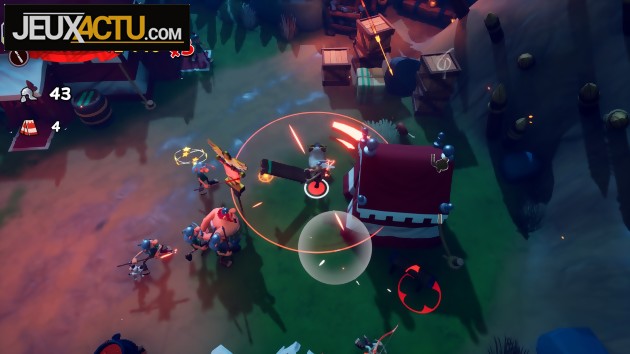
SACRED GAUL
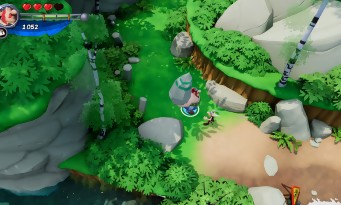 Like the other episodes of the series, XXXL still tries to vary the pleasures with a few puzzles that need to be solved to unlock the path. But the latter are struggling to get out of the triptych of switches to operate, rocks to push, platforms to move. There are a few musical rehearsal sequences to be performed during a specific level (on the "Simon" principle), but all of this remains extremely classic. The lack of jumping will also bother some players, especially at the start of the adventure. The rush partially compensates for this lack, but it is still disturbing not to be able to jump at all in a platformer. Fortunately, you get used to it relatively quickly and, after all, it's quite logical not to see Obélix performing somersaults. What is less logical, however, is to see Asterix or Obelix regularly teleport near the other companion. Solo, it is indeed possible to change characters at will, which is even essential to solve certain puzzles. But some of them are clearly designed for co-op, and require passing one character first, then the other. This remains achievable in solo but, once a first hero has passed, it is easier and faster to continue with him for a little while, until the other joins him as if by magic. Moreover, if the AI is suitable during the basic fights, it has strange absences during the "boss" phases. Quotation marks are de rigueur as these clashes lack scale. The most embarrassing thing is still to see the Gaul that we don't control being rolled over by waves of Romans without reacting (without this taking away life points, fortunately). The Aries of Hibernia is therefore best appreciated by two, or even four (suspension of disbelief required in the latter case, because two Asterixes and two Obelixes are then found on the screen). Let's finish with a word on the lifespan, which hardly exceeds five hours. It's a bit short, and the only way to prolong the adventure is to find helmets hidden in the scenery, and to try to win medals (time, score, life, special) in the end-of-level camps.
Like the other episodes of the series, XXXL still tries to vary the pleasures with a few puzzles that need to be solved to unlock the path. But the latter are struggling to get out of the triptych of switches to operate, rocks to push, platforms to move. There are a few musical rehearsal sequences to be performed during a specific level (on the "Simon" principle), but all of this remains extremely classic. The lack of jumping will also bother some players, especially at the start of the adventure. The rush partially compensates for this lack, but it is still disturbing not to be able to jump at all in a platformer. Fortunately, you get used to it relatively quickly and, after all, it's quite logical not to see Obélix performing somersaults. What is less logical, however, is to see Asterix or Obelix regularly teleport near the other companion. Solo, it is indeed possible to change characters at will, which is even essential to solve certain puzzles. But some of them are clearly designed for co-op, and require passing one character first, then the other. This remains achievable in solo but, once a first hero has passed, it is easier and faster to continue with him for a little while, until the other joins him as if by magic. Moreover, if the AI is suitable during the basic fights, it has strange absences during the "boss" phases. Quotation marks are de rigueur as these clashes lack scale. The most embarrassing thing is still to see the Gaul that we don't control being rolled over by waves of Romans without reacting (without this taking away life points, fortunately). The Aries of Hibernia is therefore best appreciated by two, or even four (suspension of disbelief required in the latter case, because two Asterixes and two Obelixes are then found on the screen). Let's finish with a word on the lifespan, which hardly exceeds five hours. It's a bit short, and the only way to prolong the adventure is to find helmets hidden in the scenery, and to try to win medals (time, score, life, special) in the end-of-level camps.




